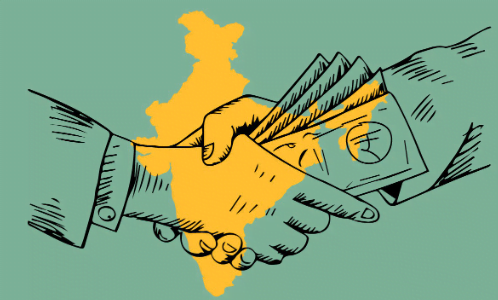The Prevention of Corruption Act, 1988: A Pillar in the Fight Against Corruption in India
- Sharad Nagpal
- Dec 28, 2024
- 7 min read

Corruption remains one of the most significant challenges in India, with its detrimental effects spanning across economic, political, and social landscapes. Over the years, India has witnessed several laws and measures aimed at curbing this pervasive issue, but one of the most pivotal pieces of legislation is the Prevention of Corruption Act (PCA), 1988. This law serves as a critical tool for tackling corruption, especially in public life, by criminalizing bribery and various forms of corrupt practices involving public servants.
In this blog, we will take an in-depth look at the Prevention of Corruption Act, 1988, including its historical context, key provisions, amendments, judicial interpretations, and the ongoing challenges in its enforcement. We will also examine practical examples of how the law functions and its implications for both public and private sectors.

Historical Context of Corruption in India
Corruption in India, as in many parts of the world, has historical roots. The practice of bribery and misuse of power can be traced back to colonial times, Where British officials often engaged in corrupt practices that became entrenched in Indian governance systems. For instance, during the 18th century, Lord Cornwallis, a British administrator, was known to have accepted bribes, setting a precedent that many would follow in the years to come.
Post-independence, India faced its own challenges with corruption, particularly within government systems. Although there were laws like the Indian Penal Code (IPC) and the Indian Evidence Act, these were not sufficient to specifically address corruption in public life. It wasn’t until the Prevention of Corruption Act, 1947, was enacted that India attempted a more formalized approach to tackling bribery. However, the 1947 Act lacked the enforcement rigor and comprehensive structure necessary to tackle the growing wave of corruption in the country.
In 1988, the Indian government passed the Prevention of Corruption Act, which marked a significant shift in the legal framework. The law aimed to provide more effective deterrents, penalties, and a formal mechanism for addressing corruption among public servants.

The Need for the Prevention of Corruption Act
The rise in corruption during the 1970s and 1980s, particularly in the wake of economic liberalization and growing bureaucratic influence, led to increased public demand for stronger anti-corruption measures. The Act was drafted in response to this growing concern, and its core purpose was to criminalize bribery and corruption involving public servants, set out clear penalties, and create institutions to enforce the law effectively.
Key Features of the Prevention of Corruption Act, 1988
The Prevention of Corruption Act, 1988 outlines several crucial provisions aimed at combating corruption in public life. Below are some of its key features:
1. Expanded Definitions of Corruption
One of the notable features of the PCA is its comprehensive definition of corruption, which includes various forms of unethical practices. The Act criminalizes not only bribery but also other forms of corruption, including misuse of office, criminal breach of trust, and misappropriation of public funds. It defines a "public servant" broadly, covering government employees, judges, members of statutory bodies, and even elected representatives.
This wide-reaching definition ensures that the law can be applied to various public officials across different sectors, thus enhancing its scope and effectiveness.
2. Burden of Proof
A significant shift introduced by the PCA was the burden of proof. In traditional criminal law, the prosecution is required to prove the guilt of the accused. However, under the PCA, the burden of proof is reversed: it is the accused who must prove their innocence. This provision was aimed at making it harder for corrupt individuals to escape punishment by exploiting loopholes in the system.
3. Criminalization of Bribery
The PCA explicitly criminalizes bribery and other forms of illegal gratification involving public servants. According to the Act, any public servant who accepts or solicits a bribe or illegal gratification is punishable by imprisonment for up to five years and a fine. Furthermore, anyone who offers a bribe is also liable under the law, facing imprisonment for up to three years and a fine.
4. Penalties for Misuse of Power
The PCA also criminalizes the misuse of official power. A public servant who exercises their position to grant undue favors in exchange for bribes or personal gain can be charged under the Act. The penalties for this offense include imprisonment for up to seven years and a fine.
5. Investigation and Enforcement
The PCA gives special powers to specific government officers, including the Central Bureau of Investigation (CBI), to investigate and prosecute corruption cases. This ensures that investigations are conducted by trained personnel with the necessary authority, rather than relying solely on local or state police.

Amendments to the Prevention of Corruption Act
While the Prevention of Corruption Act, 1988, was a significant step toward curbing corruption, its application faced some challenges over time. To address these issues, the law has been amended several times. The most notable amendments were made in 2018, which introduced new provisions and expanded the scope of the Act.
1. Expansion of Offenses
The 2018 amendment broadened the range of offenses under the Act, ensuring that it accurately reflects the complexities of modern corruption. It explicitly criminalizes not just monetary bribery but also non-monetary forms of bribery and influence peddling. This change was aimed at tackling the evolving nature of corrupt practices, which often involve goods, services, and personal favors instead of just cash payments.
2. Corporate Liability
The 2018 amendments also introduced provisions for corporate entities. It established that commercial organizations engaging in corrupt practices, such as offering bribes to public servants, could be held accountable under the Act. This is a critical step in addressing corporate corruption, ensuring that businesses also play a role in maintaining ethical governance.
3. Immunity for Bribe Givers
One of the more controversial provisions of the 2018 amendment is the immunity offered to bribe givers. Under certain circumstances, individuals who offer bribes can receive immunity from prosecution if they cooperate with authorities in the investigation. This provision has sparked debates, as some argue that it might incentivize bribery by protecting the givers rather than focusing on punishing both parties involved.

Judicial Interpretations of the Prevention of Corruption Act
The interpretation of the Prevention of Corruption Act by courts has played a significant role in shaping its application and effectiveness. Judicial rulings have clarified several aspects of the law, ensuring that the intent of the legislation is preserved while addressing practical challenges.
Vijay Kumar v. State of Tamil Nadu (2023)
In this landmark case, the Supreme Court of India clarified that the mere recovery of money from a public servant is not sufficient to convict them under the Prevention of Corruption Act. The prosecution must establish beyond reasonable doubt that the accused had demanded and accepted the bribe. This ruling emphasized the importance of evidence in proving the guilt of an accused and reinforced the need for thorough and proper investigation procedures.
State of Karnataka v. B.S. Yeddyurappa (2012)
In another significant ruling, the Karnataka High Court held that a public servant is liable under the PCA if they have misused their official position to favor someone or make illegal gains. This judgment clarified that the mere act of offering or accepting a bribe is not the only offense covered by the Act; it also includes the abuse of official power for personal or political gain.
Prevention of Corruption and the Role of Investigating Agencies
The success of the Prevention of Corruption Act depends significantly on the effectiveness of investigative agencies like the Central Bureau of Investigation (CBI), Lokayukta, and state anti-corruption bodies. These agencies play a critical role in gathering evidence, conducting raids, and prosecuting corruption cases. However, the investigation process often faces challenges like political influence, bureaucratic hurdles, and slow judicial proceedings, which hamper timely and efficient justice.
Challenges in the Enforcement of the Prevention of Corruption Act
Despite the provisions in place under the Prevention of Corruption Act, several challenges persist in enforcing the law effectively. Some of the key challenges include:
1. Political Influence
One of the significant obstacles to enforcing anti-corruption laws in India is the political influence that often affects investigations and prosecutions. Corruption cases involving high-ranking politicians or influential bureaucrats are often delayed or manipulated due to political pressure, leading to a lack of accountability.
2. Lack of Resources and Training
Investigating agencies often lack resources, manpower, and training, which hinders their ability to investigate complex corruption cases effectively. Given the scale of corruption in the country, well-funded and specialized units are needed to address corruption at both the local and national levels.
3. Delayed Judicial Process
Even when corruption cases are successfully investigated, delays in the judicial process can result in the accused avoiding punishment for years. The slow-moving judicial process creates a perception of impunity, discouraging victims from coming forward and undermining public trust in the legal system.
Conclusion
The Prevention of Corruption Act, of 1988, is a crucial instrument in India's efforts to combat corruption, a pervasive issue that undermines governance and economic development. While the Act has significantly improved the legal framework for addressing corrupt practices, challenges remain in its implementation and enforcement. To ensure that the PCA fulfills its potential, there is a need for better investigation officer training, more robust judicial processes, and greater political will to combat corruption.
By continuing to evolve the Act and its provisions, India can take a stronger stance in its battle against corruption and move towards a more transparent and ethical society. Ultimately, the fight against corruption is not only the responsibility of the government and legal institutions but also requires the active participation of every citizen to uphold the values of honesty, integrity, and accountability.




Comments